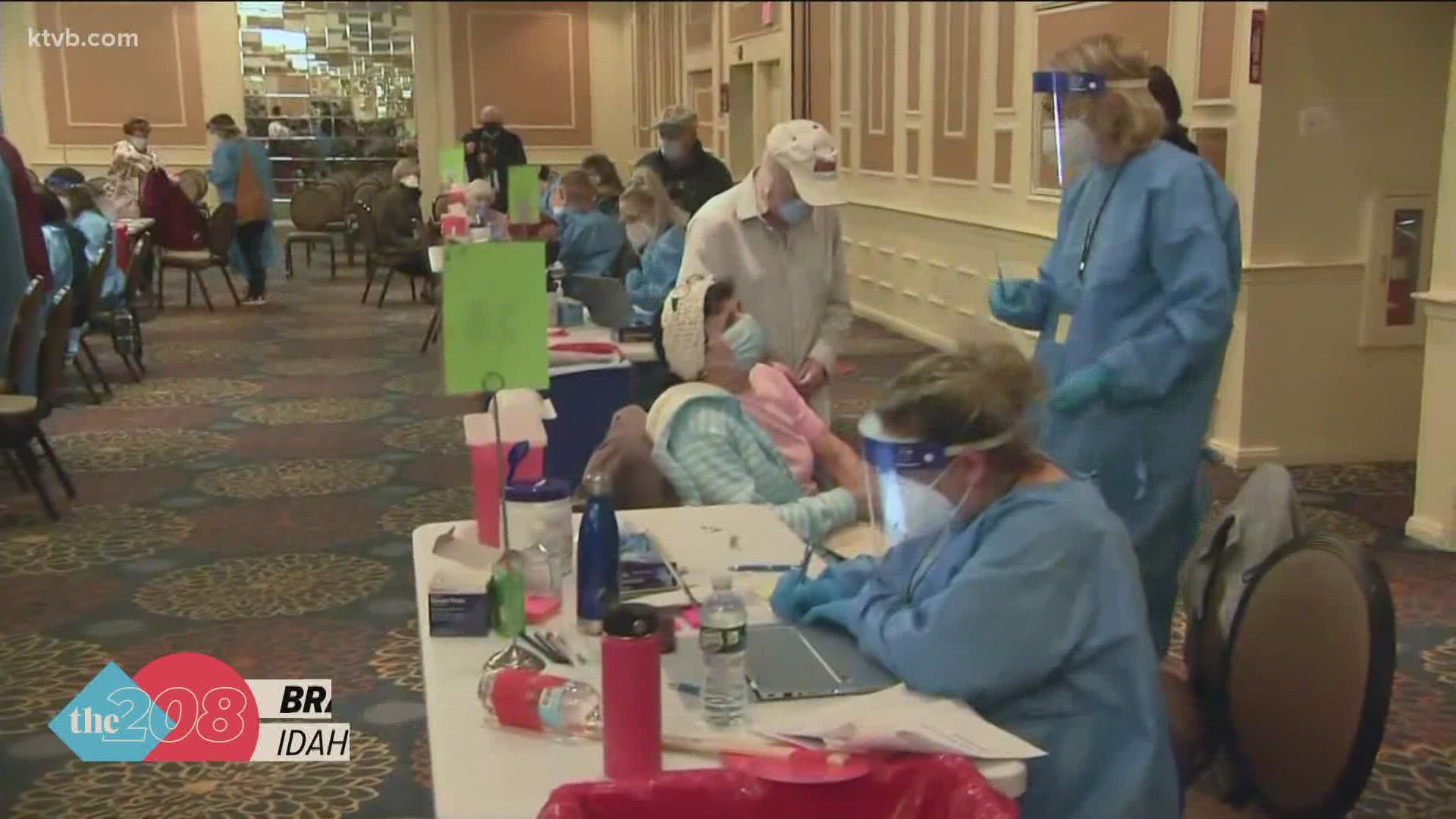BOISE, Idaho — For the first time since September, this week most of Idaho moved out of crisis standards of care brought on by an aggressive wave of COVID-19.
“The crisis standards of care has been really challenging, obviously, for all of us and we were fortunate that we never got into a situation where we really had to make a decision on who got a ventilator or who got a bed,” said Dr. Patrice Burgess, Executive Medical Director for Saint Alphonsus.
For about 9 weeks, Dr. Burgess and the Saint Alphonsus team across Idaho worked through the most difficult period of the pandemic to date.
“Many times people sicker on the regular floor, when they would normally go to the ICU, but we didn’t have enough ICU beds so we got through all of that maintain the best care we possibly could but that was uncomfortable because we all want to do things as best as we possibly can and we were very, very worried that we would end up in a situation where we ran out of ventilators or we ran out of space and had to turn people away,” Burgess said.
For weeks, front-line medical workers tried to save very sick COVID patients needing intensive care. Some made it, some did not. One word that frontline healthcare workers felt really described their situation: helpless. Dr. Brent Duff, Medical Director for St. Luke’s Magic Valley, shares insight on that feeling inside Idaho hospitals
“There is helplessness when you focus on your inability to change the trajectory of the patient’s life. The successes we’ve seen are when you focus more on trying to make the best situation for the family and even though you can’t treat the patient you can show empathy for them. I find that empathy is as much healing as we can offer at this point,” Duff said.
Most of the state moving out of crisis standards is a good sign, but Idaho medical leaders are keeping a close eye on COVID metrics.
"It's still very serious," Dr. Burgess said. "We watched pretty closely, our test positivity rate, as well as the cases per 100,000 in our community, and we were seeing some improvement in our test positivity rate during the worst part of the search was up to 25%. And if it's less than 5%, you feel like things are spreading as rapidly under reasonable control. We got down to 9%. But now we're back up to 10%. So we get a little nervous. We see those numbers jump around. So we'd like to see those numbers more and for longer periods."
It's still very serious and we had been, we knew that we weren't closing down those initial units. So we have been you know, cautiously optimistic. But we watched pretty closely our test positivity rate, as well as the cases per 100,000 in our community, and we were seeing some improvement in our test positivity rate during the worst part of the search was up to 25%. And if it's less than 5%, you feel like things are spreading as rapidly under reasonable control. We got down to 9%. But now we're back up to 10%. So we get a little nervous. We see those numbers jump around. So we'd like to see those numbers more and for longer periods.
Coming out of crisis standards does not mean things are back to normal, and Idaho medical leaders are urging caution to communities with COVID as the holiday season approaches. In the season of giving thanks, it’s an understatement to thank frontline healthcare workers who have pushed through a very difficult year.
"I couldn't be more proud and blessed to work with physicians, nurses, respiratory therapists, environmental services, phlebotomists, that I've worked with for the last four months and 18 months since COVID really started. They continue to show up and work and work extra, and work extra hard,” Duff said.
Join 'The 208' conversation:
- Text us at (208) 321-5614
- E-mail us at the208@ktvb.com
- Join our The 208 Facebook group: https://www.facebook.com/groups/the208KTVB/
- Follow us on Twitter: @the208KTVB or tweet #the208 and #SoIdaho
- Follow us on Instagram: @the208KTVB
- Bookmark our landing page: /the-208
- Still reading this list? We're on YouTube, too:

